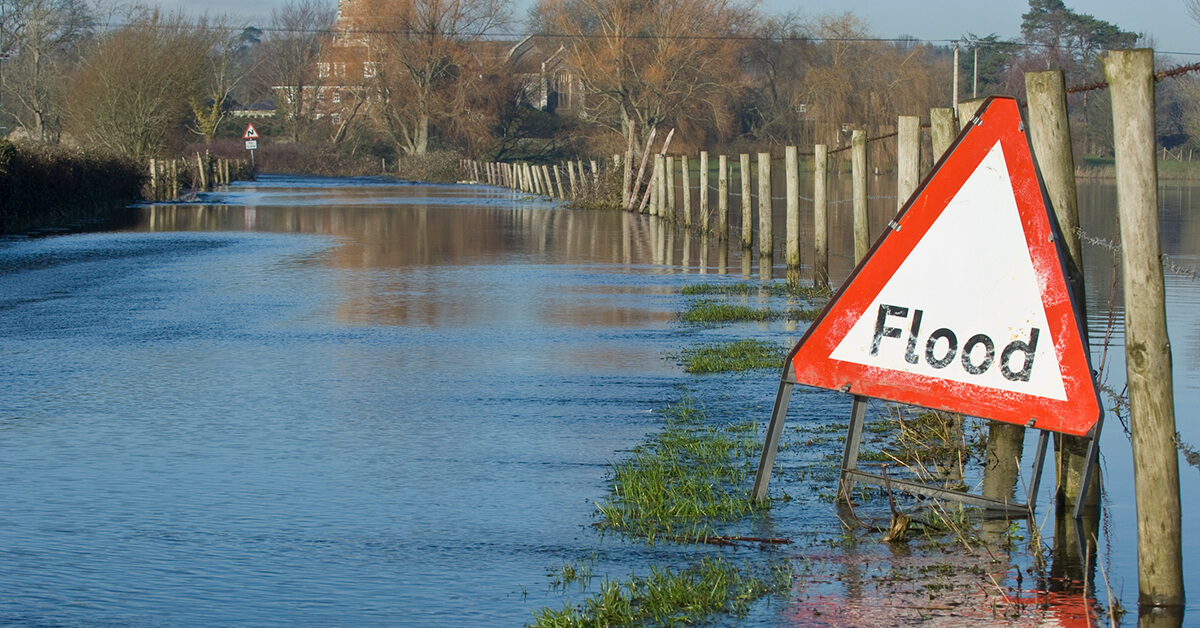
The First Street Foundation’s Flood Risk Analysis Shows More Pennsylvania Homeowners Are at Risk
Knowing whether or not your home is in a floodplain should be pretty straightforward. However, in Pennsylvania many homeowners are receiving conflicting reports about the risk of flooding in their area which may be leaving some homeowners ill-prepared to deal with this potential danger.
The First Street Foundation is a nonprofit dedicated to the research and development of flood prevention. First Street’s recent report models the flood risk in the past, present, and future at the individual property level by location. Across the nation, First Street’s estimates for properties at risk for significant flooding are drastically higher than the Federal Emergency Management Agency’s (FEMA). First Street’s report estimated 5.9 million more homes are at risk than FEMA’s analysis.
To make their assessment, the First Street Foundation takes into account sea-level rise, rainfall, and flooding along smaller bodies of water. FEMA’s maps don’t take flooding caused by rainfall into consideration which is one reason for the discrepancy.
Another key difference is that the First Street Foundation does not use stationarity in its methodology. Dr. Ed Kearns, First Street Foundation’s chief data officer explains, “In environmental engineering, there is a concept called stationarity, which assumes that today is going to be like yesterday, and tomorrow is going to be like yesterday.” He continues, “This concept used to work, but with a changing environment it’s a poor assumption and no longer does. FEMA’s method assumes stationarity, First Street’s does not.”
The article Here Are The Pennsylvania Cities With The Greatest Flooding Risk reports that First Street uses three risk description levels in their report to classify the possibility of flooding:
- Almost certain risk: 20 percent annual probability
- Substantial risk: 1 percent annual probability
- Any risk: 0.2 percent annual probability
According to First Street, the flood risk in Pennsylvania is as follows:
- Total properties at substantial risk in 2020: 564,600.
- Total properties at substantial risk in 2050: 587,400.
- The difference in the number of properties currently at substantial risk compared to FEMA maps: 370,200.
The areas of Pennsylvania with the highest numbers of properties at risk for flooding are:
- Philadelphia: 53,378 properties in 2020
- Pittsburgh: 21,803 properties in 2020
- Harrisburg: 7,395 properties in 2020
- Wilkes-Barre: 6,919 properties in 2020
- Williamsport: 5,039 properties in 2020
Pennsylvania homeowners can enter their exact address into First Street’s Flood Factor tool to check their specific flood risk.
Vince Malta, president of The National Association of REALTORS® said, “Improving access to credible flood risk data is critical to many property owners and prospective buyers across the country and to enhancing confidence in real estate markets in various U.S. regions.” Malta noted that NAR “welcome[s] all prudent steps toward the development and dissemination of resources that will help American consumers make fully informed decisions about properties’ specific flood risks.”
According to FEMA, just one inch of water in your home can leave behind $27,000 worth of damage. There are two ways to mitigate the risks of living in a flood-prone area.
Get Flood Insurance: An important piece of flood protection is flood insurance. Standard homeowner’s policies don’t include flood protection. However, most lenders will require flood insurance if your home is in a designated floodplain. So, with the expansion of at-risk areas associated with the First Street Foundation’s new findings, homeowners should contact their lenders and insurers to make sure they are meeting all requirements.
The National Flood Insurance Program (NFIP) offers two homeowners policies that address flooding. One covers the dwelling itself and the other covers your personal property. Your home can be insured for up to $250,000 and its contents up to $150,000. The NFIP offers step by step instructions for obtaining insurance, documenting damage, and filing a claim.
Lower Your Flood Risk: In addition to adding flood insurance to your homeowner’s policy, Pennsylvania homeowners in a flood-prone area can make some physical modifications to their home and property that will not only lower their risk of flood damage but reduce the cost of insurance.
Some common flood mitigation options include:
- Elevating utilities.
- Installing flood openings.
- Filling in basements.
- Elevating your property.
- Relocating your home.
Many homeowners in Pennsylvania who previously thought they were safe from flooding are finding out, through the First Street Foundation’s analysis, that their homes may actually lie in a high-risk area. Having a complete picture of your property’s flood risk is essential for homeowners and prospective buyers to make educated and fully informed decisions about the purchase and long term maintenance of their home.
Time to Focus on Affordable Housing
Taxes on real estate are not the answer. Sign the petition calling on Congress to address our country’s housing shortage.





